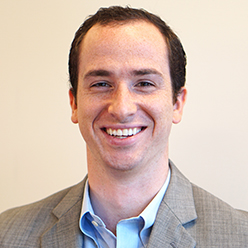The Station Rotation has consistently reigned as the most popular blended-learning model implemented by elementary schools. Of the 235 active elementary schools currently profiled in the BLU school directory, 136, or 58 percent, of them have a Station Rotation program. Over the past few months, however, we’ve started to see a number of these schools shift away from the Station Rotation model and instead opt for an Individual Rotation or Flex model. Although still early, this data provides a trend line worth following as blended and personalized learning continue to evolve.
In 2013, when we published our hybrids paper, Clay Christensen, Michael Horn, and Heather Staker predicted that the Station Rotation would remain the most popular blended-learning model at the elementary school level for years to come. There were several reasons, both practical and theory-driven, for this prediction:
- Low-hanging fruit. Many educators, particularly at the elementary school level, have rotated students among centers or stations for decades. As a result, replacing one of those stations with online learning is a low conceptual hurdle for teachers to overcome.
- Scalability. A Station Rotation typically operates within the confines of a single classroom and therefore can require little to no coordination with other teachers, departments, or facilities. As a result, a Station Rotation allows educators to introduce the benefits of online learning while preserving the traditional classroom structure, which makes it easily scalable.
- Differentiated instruction. A Station Rotation breaks up the class into smaller groups, which allows teachers to work with students in small-group settings on a daily basis. In these settings, teachers can more easily differentiate instruction for groups of students based on their respective needs. Online learning also gives students independent time to work through adaptive online content and receive real-time feedback on their learning progress.
- Pockets of nonconsumption. Disruptions often get their start in pockets of unmet demand, called nonconsumption. For this reason, we envisioned high schools and, to a large extent, middle schools to be susceptible to larger scale changes because they operate on a course-by-course basis where pockets of nonconsumption, such as students in need of advanced courses or credit recovery, are rampant. Elementary schools, on the other hand, operate on a whole-class basis instead of course-by-course and aren’t yet dealing with dropouts or students in need of credit recovery.
In light of this growing subset of schools that are innovating within a Station Rotation modelor moving away from them entirely—it will be essential to understand what is causing the change and whether or not it is a trend that has the potential to scale.
Note: Early next year, I will be doing an in-depth case study on this trend and would love to hear from practitioners who are shifting away from a Station Rotation model. Feel free to send me an email or leave a comment below.
From my initial conversations with folks on the ground, there appear to be three main motivators for schools that are innovating within and beyond a Station Rotation, namely the desire for flexible time, an increased emphasis on student agency, and an increase in technology access.
The Station Rotation limits the flexible use of time
Relative to the traditional stand-and-deliver model of teaching, a Station Rotation offers enormous benefits. Teachers have time to work with students in small groups, students have independent time to master content, and, by virtue of online learning, teachers have actionable data to inform instruction. A Station Rotation, however, requires that every student rotate to every station for the same amount of time, which means that some students may have to rotate before they’re ready to move on. As a result, not only are students engaged in learning activities that may not match their individual needs at any given moment, but teachers are also limited in their ability to differentiate or personalize instruction for each student.
This reality is causing several school leaders to push the boundaries of a Station Rotation, or move entirely to a model that offers more time for a teacher for flexibility. In describing her experience observing classrooms that used a Station Rotation model, Sharon Wright, a blended-learning coach at Greeley-Evans School District 6 in Greeley, Colo., said:
At the sound of the alarm to rotate, I would hear audible sighs from both students and teachers. Students who were doing project or online stations were highly engaged and didn’t want to move, and, at the same time, teachers would express that they needed a few more minutes with students in the teacher-led station to ensure they had mastered the material.
Several teachers at Greeley-Evans have since moved to a Flex model, which gives students flexible time to accomplish their learning tasks while also allowing teachers sufficient time throughout the week to meet with individual students.
Similarly, Sally Shultz, a 5th-grade teacher at Hanford-Dole Elementary School in Salisbury, N.C., realized that a fixed-time rotation model was not giving her students the time they needed to master concepts. In describing her motivation for changing models, Shultz said:
I would look at the data from our learning software and see several students who were not completing assignments or modules and were behind the rest of the class. After discussing the problem with my students, several expressed anxiety over the timer and were simply unable to move through a lot of material in the online portion of the rotation.
In an effort to ensure that she had adequate time to work with individual students and give students flexible time to accomplish their personal learning goals, Schultz transitioned her classroom to an Individual Rotation model in which students move through individualized playlists. To facilitate this model, Shultz sets the appropriate amount of time for students in each station based on their individual learning needs. To explore the option of giving students more ownership and choice over their daily learning goals, she is currently piloting a Flex model on Fridays, which she calls “Flex Fridays.”
The Station Rotation may fail to promote student agency
Blended learning requires that students have an element of control over the “time, pace, path, or place” of their learning. Although a Station Rotation gives students control over their pace and, in some cases, path during the online-learning station, throughout the class period students rotate to each station at the same time, in the same place, and at the same general pace, thereby limiting student agency throughout the learning process.
At Greeley-Evans, student agency is a focal area of instruction because “authentic student choice leads to engagement, which leads to ownership,” according to Wright. Several of the district’s teachers create lists of “must do, may do” activities that students must or may complete each week. Students then get to choose when and how they accomplish these activities throughout the week. This Flex model, where online learning takes on a larger portion of instruction and teachers work with students on an as-needed basis throughout the week, gives students a much higher degree of agency than was possible in a Station Rotation.
Similarly, Schultz transitioned her classes at Hanford-Dole to an Individual Rotation model where students choose when and how they accomplish their learning goals and individual playlists throughout the day. According to Schultz, this switch gave her students a higher degree of agency and ownership over their learning, and her students have improved their science scores from near last in the county to fourth.
More devices means more options
A Station Rotation can operate with limited devices. For this reason, it’s generally the first blended-learning model implemented at schools that aren’t 1:1. Once schools acquire more devices, however, the Individual Rotation and Flex models become possibilities, as they generally require students to have their own internet-enabled device in order to transition between learning modalities at their own pace. This was the case for Korematsu Discovery Academy, a K–5 public school in Oakland, Calif. According to the principal, Arnie Lamontagne, “[o]nce [Korematsu] went 1:1, we were able to transition to a Flex model in 4th and 5th grade, where students now have freedom to create their own learning schedules and work independently on our learning software.” The school employs a similar “must do, may do” approach as Greeley-Evans for its Flex model, where students have choice over their learning activities so long as they accomplish specific learning goals. This type of model is theoretically possible with limited device access, but it is made easier when every student has access to content, feedback, assessment, and learning activities all scaffolded in an internet-enabled device.
The Station Rotation model is an intergenerational combination of the classroom of yesterday with the classroom of the future. And although hundreds of schools and districts are seeing positive results with this model, it is clear that some sort of change is afoot.
For more, see:


